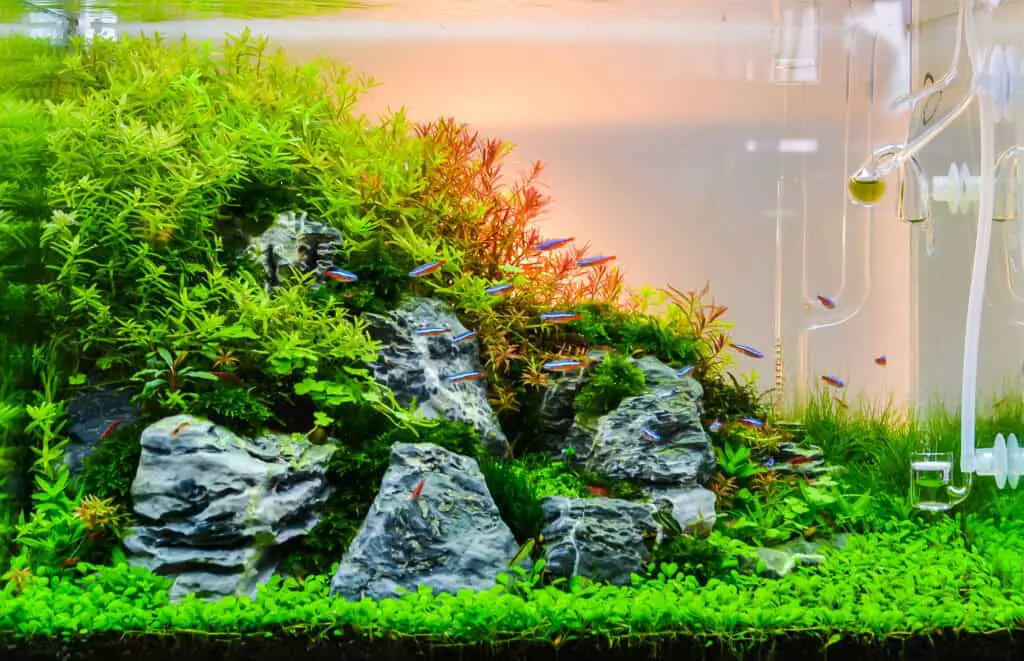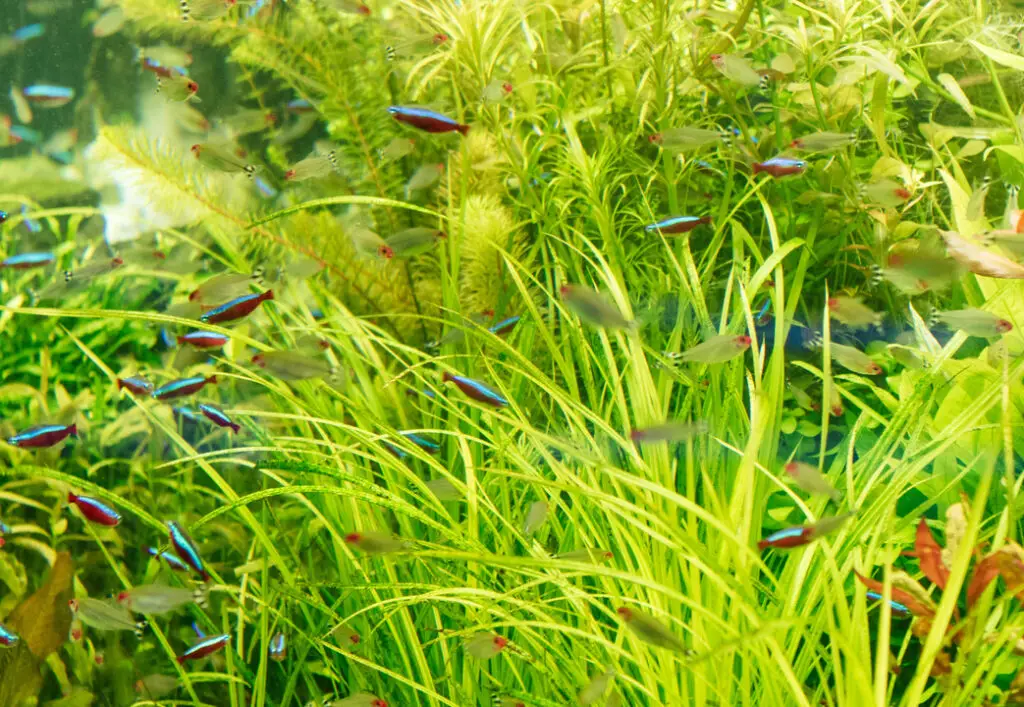
In the world of fish tanks, live plants can help provide great benefits to your tank environment, as well as added aesthetic appeal.
When it comes to the needs of aquatic plants, CO2 is a big necessity for successful growth and many planted tanks provide additional CO2 by injecting it into the aquarium to make sure this resource isn’t depleted. But is this injection of CO2 always necessary to start your planted tank?
Injection of CO2 into a planted aquarium is not necessary to have your aquarium plants grow. Depending on the plants in the tank, many aquarists will recommend additional CO2 as it will help promote faster and more consistent growth in your plants as it keeps CO2 levels steady.
Certain plants can also require more CO2 than others, however, plants labeled beginner plants rarely have this requirement.
Let’s dive into the role of CO2, and how CO2 injection is not necessary, along with some recommendations for plants that will work well in a tank without CO2 injection.
How CO2 Gets Into Your Tank, And Why CO2 Injection Is Not Necessary
Aquariums will naturally receive CO2 resources without additional injection, which allows plants to still grow without CO2 addition.
This natural CO2 will come from a couple of different sources.
The tank inhabitants such as fish and invertebrates will produce CO2 through their respiratory process.
Decaying organic matter such as leftover food, and plant material also contributes to adding CO2 to a tank.
Because of this, there is a natural level of CO2 that will be present in all tanks that your live plants can use to grow, making the injection of CO2 unnecessary.
This is particularly true in smaller tanks, and those that have plants that are either not as dependent on high levels of CO2 or not densely populated with plants.
There does come a point where the natural resource of CO2 will be depleted by too much demand.
But until that point is reached you can very easily have a planted tank without CO2 injection.
This is commonly referred to in the hobby as a low-tech setup.
CO2’s Role In Aquarium Plants
You may be wondering then, what role does CO2 play where adding more isn’t necessary, but still having it in the tank is for plant growth.
CO2 is utilized by plants during the photosynthesis process, where CO2, light, and water are converted into oxygen and energy.
The energy is then used in the growth and development of the plants, and the oxygen is released into the water, helping to keep your water well-oxygenated for the plants and animals to use for breathing.

Choosing The Right Plants
When it comes to planted tanks without CO2 injection or a low-tech setup, it is important to pick the right plants that will do well in this environment.
Most plants can survive with the low-tech setup, however not all will actively thrive.
Many plants that will do great without additional CO2 resources are commonly labeled as beginner-friendly plants in the hobby.
Some of the best plants to choose when not adding additional CO2 are Anubias, Java Fern, and Cryptocoryne.
Anubias
This plant is great for beginners and experts alike as it is well known for being very resilient to algae.
It is also great at thriving in tanks that don’t have high levels of lighting, considered to be a low light-loving plant.
One thing to remember with Anubias is that it prefers to be attached to rocks, driftwood, or decorations, and burying it directly into the substrate could lead to root rot.
Java Fern
This is a staple in the fish-keeping hobby, known to be extremely hardy.
It does very well at adapting to a wide variety of tank environments, being able to survive in large ranges of parameters and lighting setups.
Cryptocoryne
Like Java Fern Cryptocoryne, commonly referred to as Crypts, are extremely adaptable to a variety of tank parameters.
They are known for their variety of colors and can add a color pop to your tank, however, to get these colors additional nutrients will in most cases be required.
It is also important to know that Cryptocoryne will in most cases go through something called crypt melt which simply means they will need time to convert to being a fully submerged plant.
Optimizing Your Tank For Your Plants
With a planted tank not having added CO2, it is important to find the ideal balance of the two other main resources for proper plant growth, light, and nutrients.
Dosing nutrients in the correct amounts can help maintain success in your tank, and in most cases can be monitored by watching the plants and how they are growing and looking.
To learn more about how often you should be fertilizing your plants, read this article.
Having adequate lighting is another vital resource that should be given to your tank.
In most cases, it is recommended to have at least 12 hours of light for optimal plant growth.
Having your planted tank optimized for your plants will allow for steady growth of your plants, and help them supply the valued benefits even without adding CO2 into your tank.
Final Thoughts
Though additional CO2 has its benefits and is placed in aquariums, it is certainly not necessary for many tanks, especially when tanks are in the beginning stages of becoming planted tanks, or have beginner-level plants.
Remember to research your specific plants to know their requirements and if CO2 injection is necessary for them to survive and either consider setting up CO2 or look for other plants depending on how you want your tank setup.
Choosing the right plants and understanding their requirements will help ensure a successful experience with your planted tank.
Don’t be afraid to experiment with new plants and have fun. And remember to allow your plants to give cues if something extra is needed by paying attention to their growth and look.
